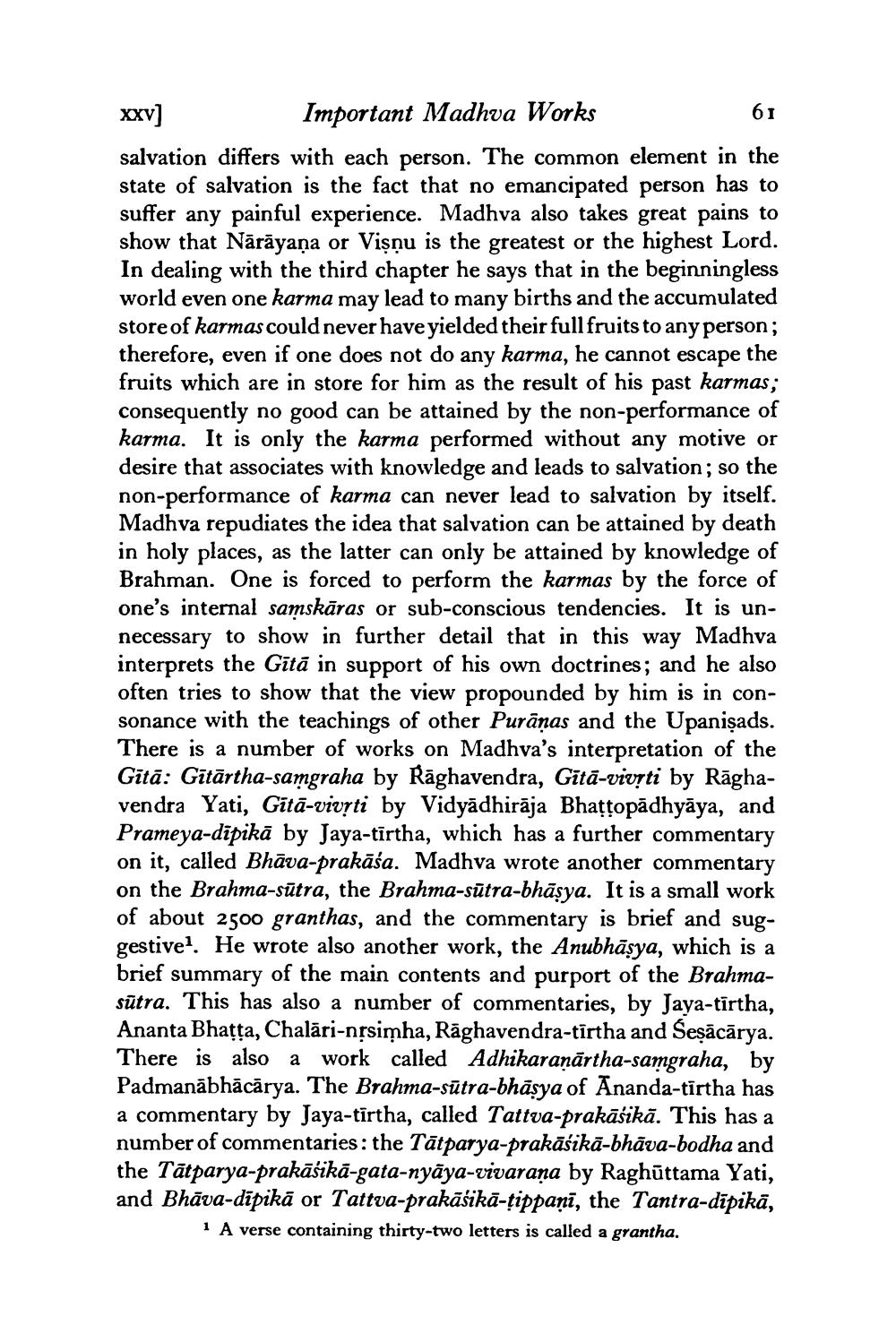________________
61
xxv]
Important Madhva Works salvation differs with each person. The common element in the state of salvation is the fact that no emancipated person has to suffer any painful experience. Madhva also takes great pains to show that Nārāyaṇa or Vişnu is the greatest or the highest Lord. In dealing with the third chapter he says that in the beginningless world even one karma may lead to many births and the accumulated store of karmas could never have yielded their fullfruits to any person; therefore, even if one does not do any karma, he cannot escape the fruits which are in store for him as the result of his past karmas; consequently no good can be attained by the non-performance of karma. It is only the karma performed without any motive or desire that associates with knowledge and leads to salvation; so the non-performance of karma can never lead to salvation by itself. Madhva repudiates the idea that salvation can be attained by death in holy places, as the latter can only be attained by knowledge of Brahman. One is forced to perform the karmas by the force of one's internal samskāras or sub-conscious tendencies. It is unnecessary to show in further detail that in this way Madhva interprets the Gītā in support of his own doctrines; and he also often tries to show that the view propounded by him is in consonance with the teachings of other Purāṇas and the Upanişads. There is a number of works on Madhva's interpretation of the Gītā: Gītārtha-samgraha by Rāghavendra, Gītā-vivști by Rāghavendra Yati, Gitā-vivíti by Vidyādhirāja Bhattopādhyāya, and Prameya-dīpikā by Jaya-tīrtha, which has a further commentary on it, called Bhāva-prakāśa. Madhva wrote another commentary on the Brahma-sūtra, the Brahma-sūtra-bhāşya. It is a small work of about 2500 granthas, and the commentary is brief and suggestive? He wrote also another work, the Anubhāşya, which is a brief summary of the main contents and purport of the Brahmasūtra. This has also a number of commentaries, by Jaya-tīrtha, Ananta Bhatta, Chalāri-nțsimha, Rāghavendra-tirtha and Sesācārya. There is also a work called Adhikaraņārtha-samgraha, by Padmanābhācārya. The Brahma-sūtra-bhāsya of Ananda-tīrtha has a commentary by Jaya-tīrtha, called Tattva-prakāšikā. This has a number of commentaries: the Tātparya-prakāśikā-bhāva-bodha and the Tātparya-prakāśikā-gata-nyāya-vivarana by Raghūttama Yati, and Bhāva-dipikā or Tattva-prakāśikā-tippani, the Tantra-dīpikā,
1 A verse containing thirty-two letters is called a grantha.




